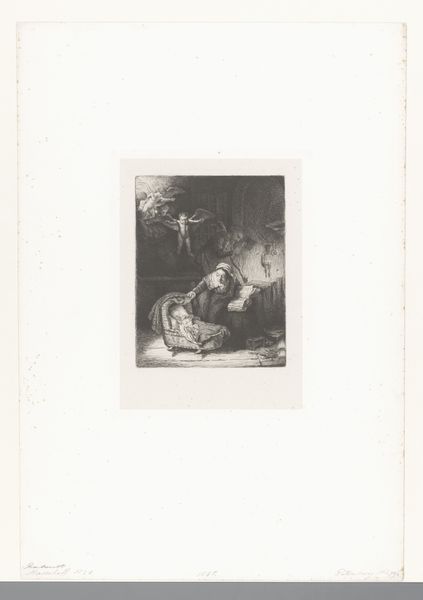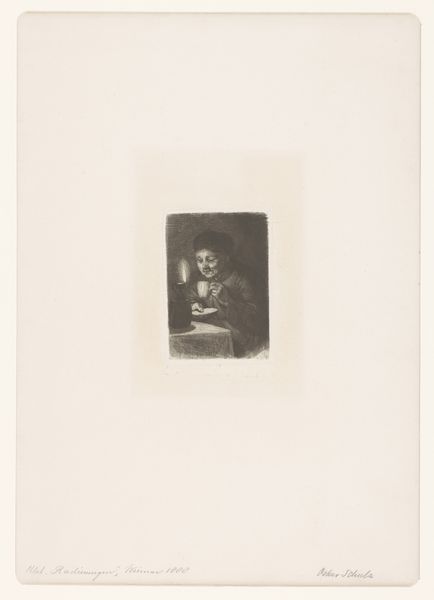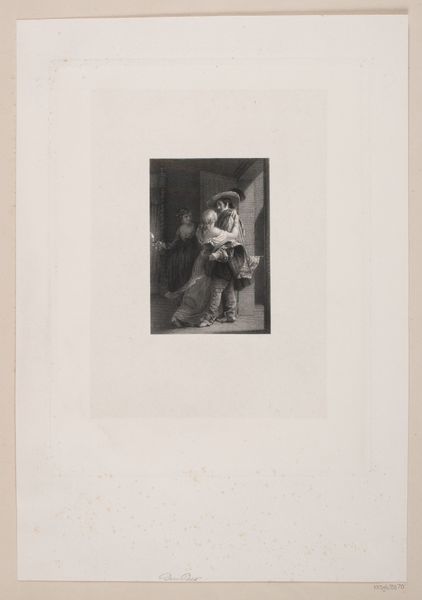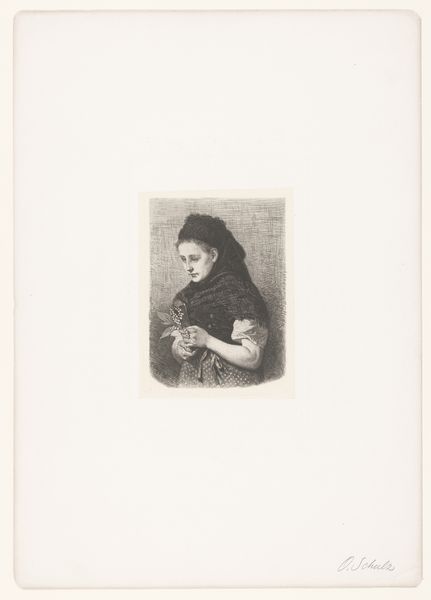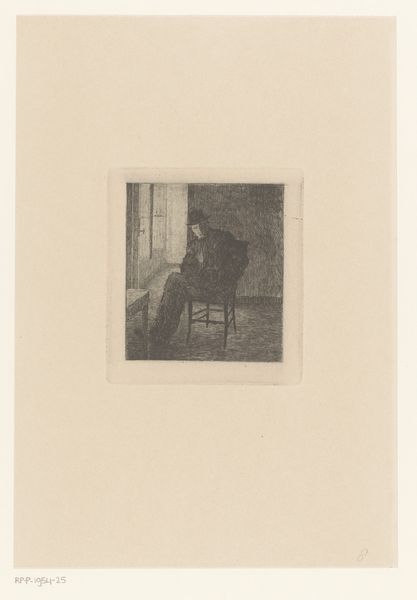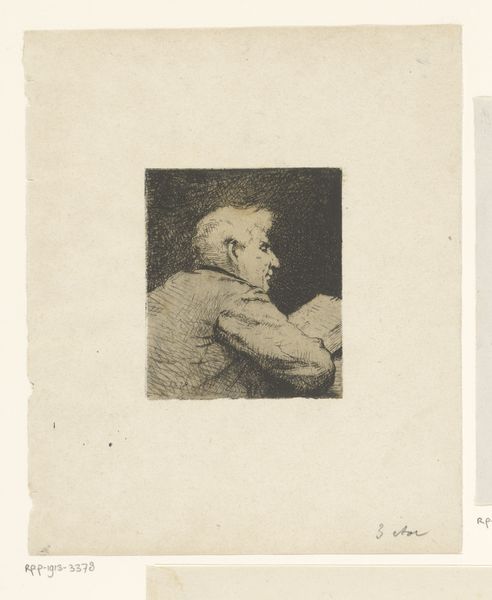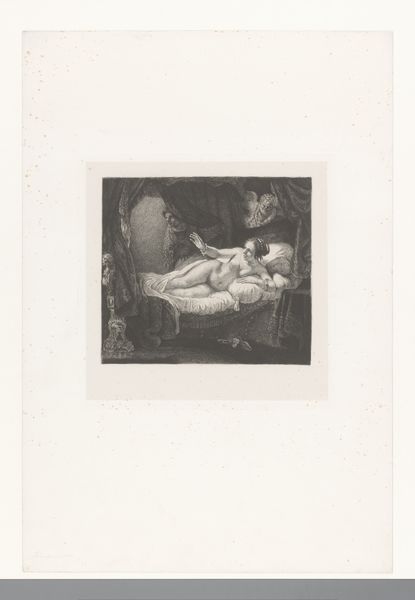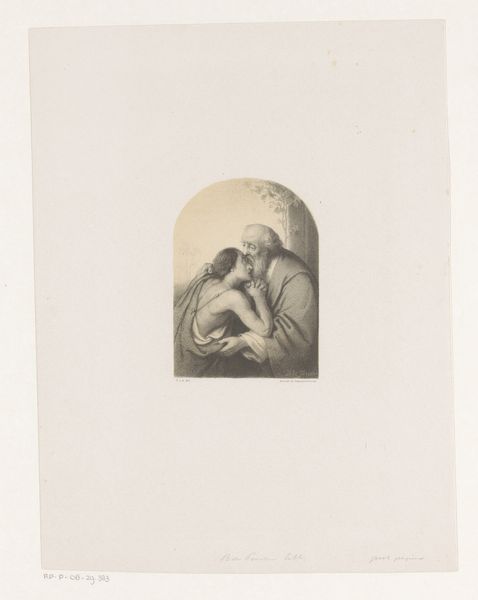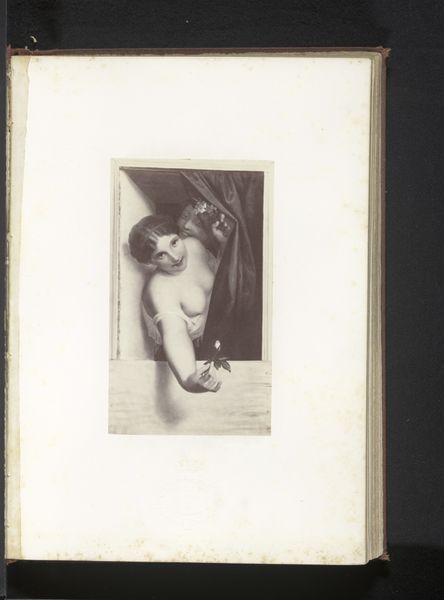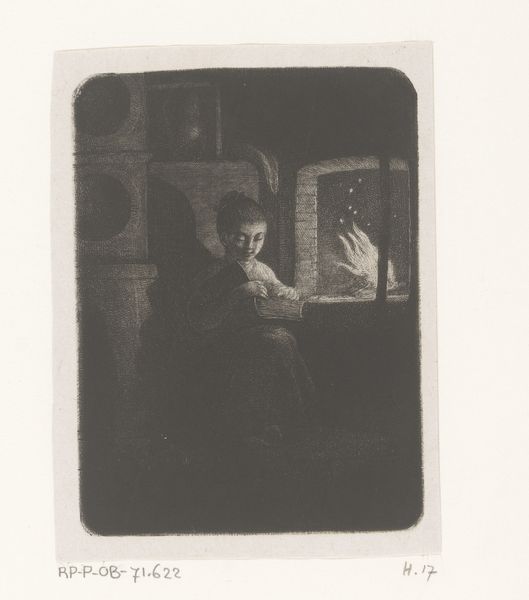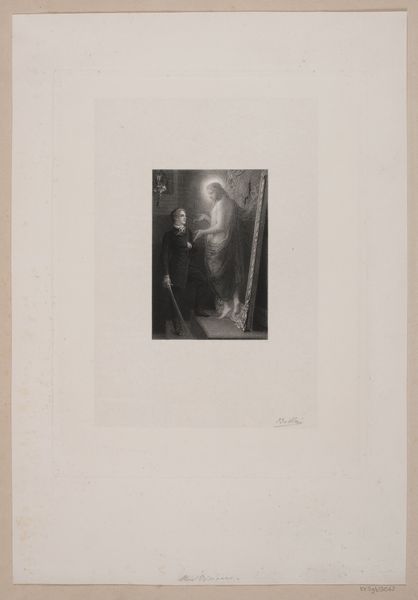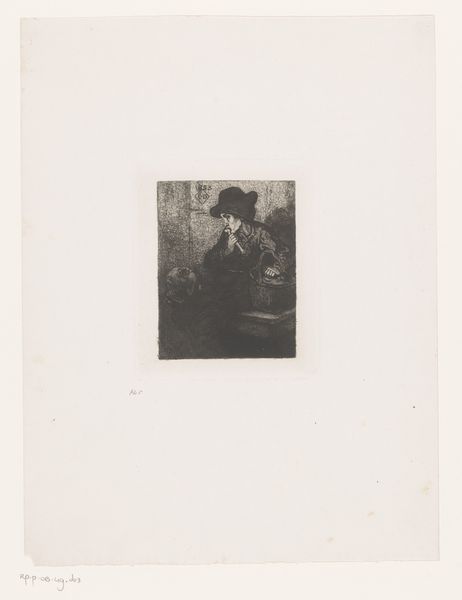
#
pencil drawn
#
photo of handprinted image
#
light pencil work
#
wedding photograph
#
pencil sketch
#
light coloured
#
old engraving style
#
white palette
#
pencil drawing
#
pencil work
Dimensions: height 70 mm, width 52 mm
Copyright: Rijks Museum: Open Domain
Editor: Here we have Chris van der Windt’s "Reclining Female Nude," created sometime between 1887 and 1952. It’s a small pencil drawing at the Rijksmuseum, and the first thing that strikes me is how intimate it feels, despite the rather loose lines. What are your initial thoughts? Curator: The interest here lies, first and foremost, in the deployment of line and tone. Note the economy of means. The artist, with a seemingly limited tonal range – predominantly light – manages to suggest volume and texture. Observe the strategic use of hatching to define the form. Editor: Hatching, yes, I see it, especially around the figure's back and arm. But what does that strategic choice of hatching *do* to the work? Curator: Consider the way the artist contrasts the areas of dense hatching with the relative flatness of the face and torso. The darker, denser areas create depth, allowing the lighter areas to come forward. It directs our attention, structuring how we visually “read” the artwork, its arrangement on the plane, and therefore the illusion. Do you agree that there is a tension in this arrangement? Editor: Definitely. The darkness pulls us in, but then the face redirects our gaze. The artist emphasizes the form through this play of light and dark. It’s quite striking. Curator: Precisely. It demonstrates the inherent power within a restricted palette when line and form take precedence, structuring the viewing experience. Editor: I see now how concentrating on those formal choices really enriches the viewing. I was drawn in by the figure, but analyzing the technique allows for deeper appreciation.
Comments
No comments
Be the first to comment and join the conversation on the ultimate creative platform.
